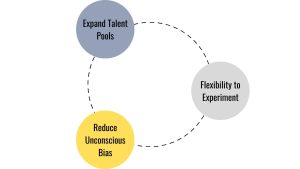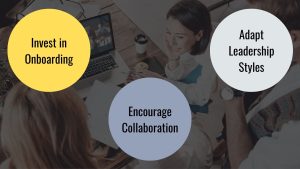Diversity and Inclusion: Using Staff Augmentation for Equity
Introduction Diversity and inclusion have become critical pillars of modern business. Companies understand that a diverse workforce drives innovation, improves decision-making...

Introduction
Diversity and inclusion have become critical pillars of modern business. Companies understand that a diverse workforce drives innovation, improves decision-making, and drives financial success. However, achieving true representation is not always easy. This is where staff augmentation can be transformative.
Why Diversity and Inclusion Matter
First, let’s understand why diversity and inclusion is vital. A diverse workforce brings a variety of perspectives, cultural insights, and problem-solving approaches. These elements can help companies create more relatable products and services. What’s more, an inclusive environment makes employees feel valued. This increases morale, retention, and productivity. Unfortunately, many industries still face barriers to achieving diversity. Unconscious bias, limited talent pools, and rigid hiring practices often exclude underrepresented groups. Addressing these challenges requires innovative approaches.
Role of Staff Augmentation in Diversity and Inclusion
Staff augmentation provides a strategic solution. By expanding your workforce with external talent, you gain access to a wider range of professionals. These people often come from different backgrounds, bringing unique skills and perspectives. Here’s how augmentation supports diversity and inclusion goals.

Expand Talent Pools
Traditional hiring focuses on local or regional candidates. Staff augmentation removes this limitation. Companies can collaborate with experts from different geographies and cultures. This automatically improves representation on teams.
Reduce Unconscious Bias
Augmented teams are often selected based on specific skills and experience. This approach minimises the impact of unconscious bias in hiring decisions. External partners focus on talent fit rather than fitting candidates into preconceived patterns.
Flexibility to Experiment
Hiring diverse talent on a permanent basis can seem like a daunting task. What if a candidate doesn’t fit the team’s culture? Staff augmentation allows you to temporarily integrate people. This gives you the opportunity to build relationships, evaluate contributions, and adjust hiring practices without long-term commitments.
Best Practices for Leveraging Augmentation
To fully realise the benefits of diversity and inclusion through staff augmentation, follow these practices.

Partner with Inclusive Providers
Select staffing agencies or outsourcing partners that are committed to diversity. Look for firms with a proven track record of providing talent from underrepresented groups. This will ensure that your augmented team will align with your diversity and inclusion goals.
Set Clear Goals
Identify specific diversity metrics you want to achieve. Whether it’s increasing representation in leadership or technical roles, clear goals help you measure progress. Share these goals with your augmentation partner for alignment.
Create an Inclusive Environment
Diversity without inclusion is ineffective. Make sure your workplace welcomes augmented team members. Offer sensitivity training, encourage open communication, and recognise contributions equally. Inclusion bridges the gap between diverse hiring and workplace harmony.
Use Technology
Use AI-powered platforms to identify diverse talent. These tools analyse data to recommend candidates with diverse profiles. They also help eliminate bias that traditional selection methods often introduce.
Success Stories: Staff Augmentation Driving Diversity
Several companies have successfully used staff augmentation to improve diversity and inclusion. For example, a tech firm struggling with a lack of gender diversity brought in external partners to recruit female software engineers. Initially hired for specific projects, these engineers later transitioned to full-time positions. The result was a more balanced team with improved collaboration. Another example is a global marketing agency. By integrating creative professionals from different cultures using augmentation, the agency developed campaigns that resonated with a wider audience. This diversity not only enriched their content, but also strengthened their brand reputation.
Challenges and How to Overcome Them
While staff augmentation offers great potential, it is not without its challenges. Miscommunication, cultural clashes, and lack of inclusion can hinder success. To address these challenges:
- Invest in Onboarding. Treat augmented members as part of the team. Introduce them to company values, work processes, and team dynamics. A structured onboarding process builds trust and clarity.
- Encourage Collaboration. Use collaboration tools and regular check-ins to keep teams connected. Ensure augmented members are included in brainstorming sessions and decision-making processes.
- Adapt Leadership Styles. Train leaders to effectively manage diverse and distributed teams. Empathy, flexibility, and cultural awareness are key traits of inclusive leadership.

Conclusion
The future of work will undoubtedly rely more on agile and distributed teams. Scaling up offers an incredible opportunity to rethink hiring practices and achieve greater representation. By embracing diversity, companies can create stronger, more innovative teams that reflect the world they serve.
Diversity and inclusion are no longer optional – they are business imperatives. Scaling up provides the tools and strategies to make diversity and inclusion goals achievable. When used correctly, it enables organisations to create a more representative, equitable, and successful workforce. By taking intentional steps, companies can pave the way for a brighter, more inclusive future.